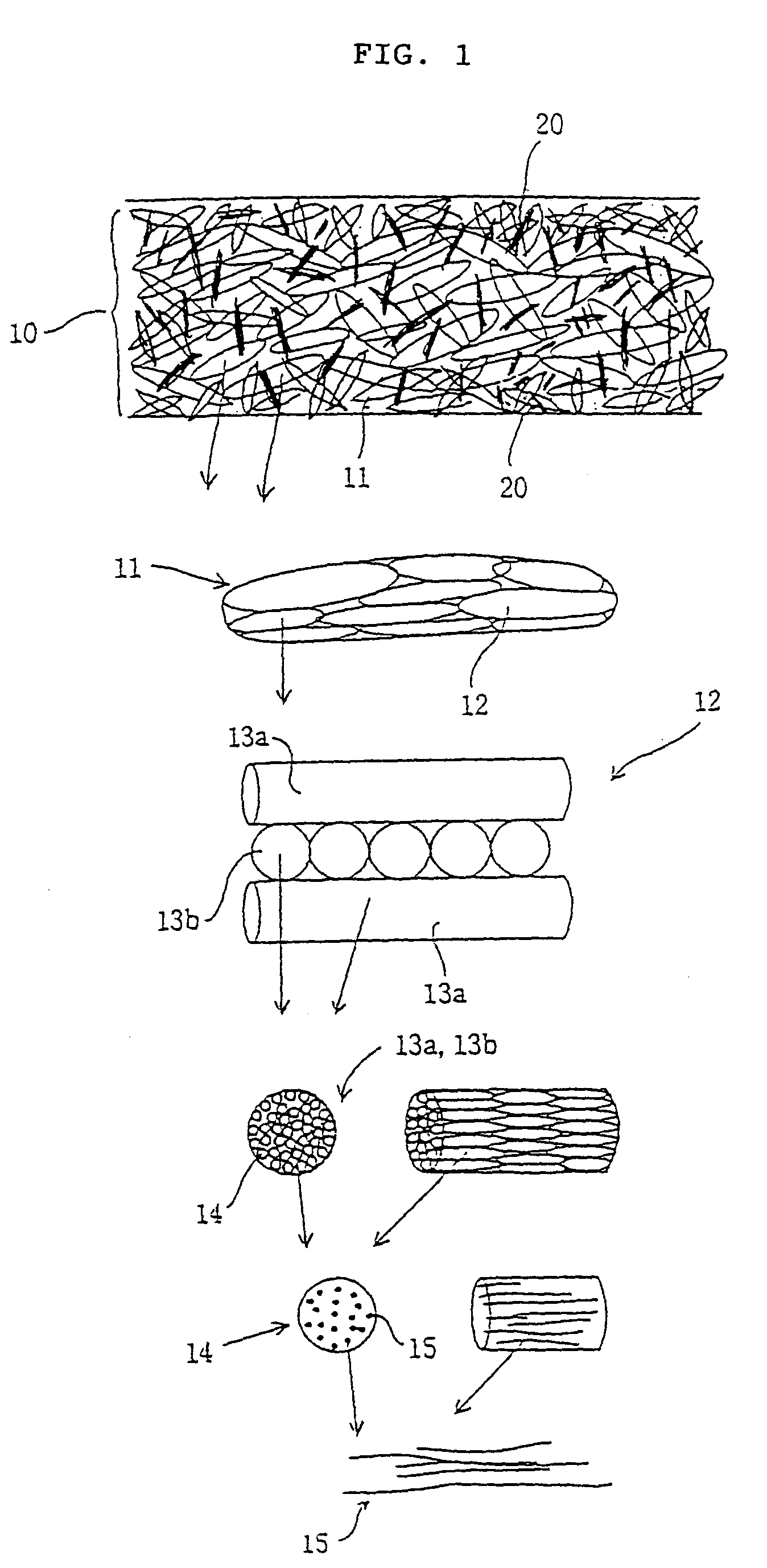Collagen material and its production process
a technology of collagen and production process, applied in the field of collagen material, can solve the problems of crosslinking agent toxicity on the body, inability to use this material as a medical material requiring suturing, and inability to apply it to all cells and viscera, so as to prevent adhesion of surgical wounds, promote regeneration of biomembranes, and no risk of infection
- Summary
- Abstract
- Description
- Claims
- Application Information
AI Technical Summary
Benefits of technology
Problems solved by technology
Method used
Image
Examples
example 1
[0076]A 1 N hydrochloric acid solution of extracted collagen (collagen concentration: 1 wt %) was prepared using pigskin collagen, and the solution was poured into a Petri dish to prepare a collagen solution layer having a thickness of 18 mm. This was then frozen for 24 hours at −20° C. and then freeze-dried for 48 hours at −80° C. Next, a multi-element structure of said freeze-dried collagen fibers (to be simply referred to as the multi-element structure) was subjected to thermal dehydration crosslinking for 24 hours at 140° C. under a vacuum followed by generating negative pressure (50 cmH2O) inside said multi-element structure with a flow aspirator to introduce a 1 N hydrochloric acid solution of extracted collagen (collagen concentration: 0.5 wt %) into said multi-element structure and fill the cavities inside said multi-element structure with non-fibrous collagen. Next, after performing freezing and freeze-drying under the same conditions as previously described (procedure for ...
example 2
[0082]With the exception of performing the procedure for forming a collagen solution layer onto the above compressed multi-element structure five times, a collagen material of the present invention was obtained in the same manner as Example 1. The one-point support tensile force and rupture resistance tensile force of said collagen material was measured in the dry and wet states according to the same method as Example 1. Those results are shown in Table 1.
example 3
[0083]With the exception of performing thermal dehydration crosslinking treatment under the same conditions as previously described and reducing the cavities inside the multi-element structure with newly formed fibrous collagen in order between the above second freeze-drying procedure and compression procedure, as well as not performing the procedure for forming a collagen solution layer on the above compressed multi-element structure, the one-point support tensile force and rupture resistance tensile force of the resulting collagen material of the present invention were measured in the dry and wet states according to the same method as Example 1. Those results are shown in Table 1.
PUM
| Property | Measurement | Unit |
|---|---|---|
| Length | aaaaa | aaaaa |
| Length | aaaaa | aaaaa |
| Length | aaaaa | aaaaa |
Abstract
Description
Claims
Application Information
 Login to View More
Login to View More - R&D
- Intellectual Property
- Life Sciences
- Materials
- Tech Scout
- Unparalleled Data Quality
- Higher Quality Content
- 60% Fewer Hallucinations
Browse by: Latest US Patents, China's latest patents, Technical Efficacy Thesaurus, Application Domain, Technology Topic, Popular Technical Reports.
© 2025 PatSnap. All rights reserved.Legal|Privacy policy|Modern Slavery Act Transparency Statement|Sitemap|About US| Contact US: help@patsnap.com


